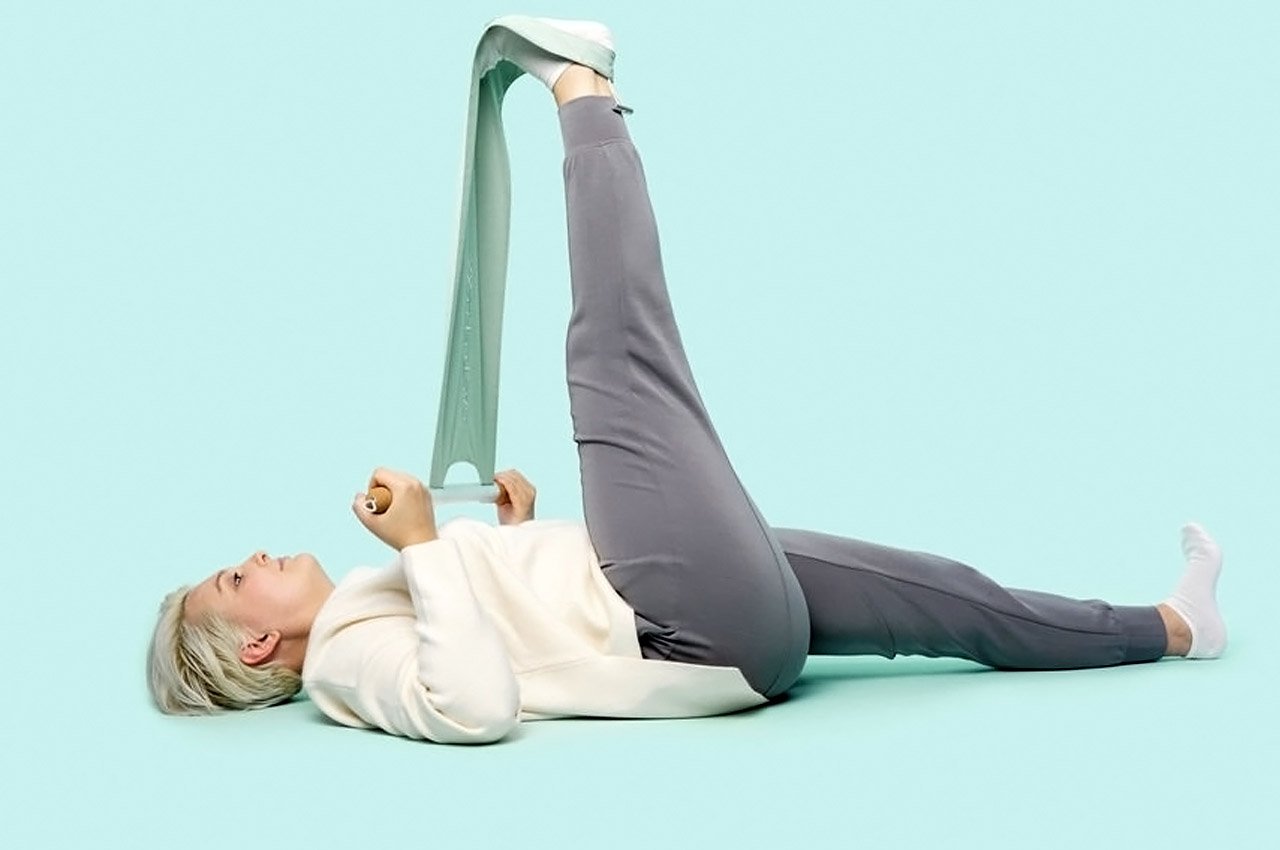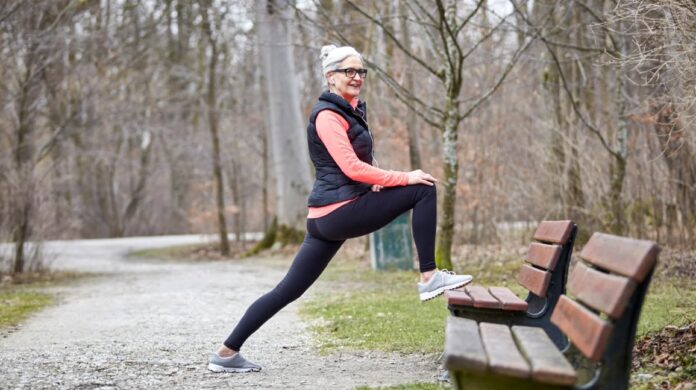Arthritis is a common condition which affects millions of people worldwide and causes joint pain, stiffness and reduced mobility. While there is no cure for arthritis, there are several ways to manage its symptoms and improve overall quality of life.
One simple yet effective method is regular stretching. In this article we’ll explore how stretching can help manage arthritis symptoms, and how incorporating CastleFlexx stretching equipment into your routine can make stretching more accessible, effective and enjoyable.
Understanding Arthritis

Before delving into the benefits of stretching for arthritis it’s essential to understand the condition itself. Arthritis is an umbrella term for over 100 different conditions which affect the joints and cause inflammation, pain and stiffness.
The two most common types of arthritis are:
- Osteoarthritis (OA): A degenerative joint disease caused by the breakdown of cartilage, leading to bone rubbing against bone.
- Rheumatoid Arthritis (RA): An autoimmune disorder which causes the body’s immune system to attack the joints, resulting in inflammation and damage.
Both types of arthritis can cause significant pain, stiffness and reduced range of motion, making daily activities challenging and impacting overall quality of life.
The Benefits of Stretching for Arthritis

Regular stretching can provide numerous benefits for individuals with arthritis, helping manage symptoms and improve overall joint health. Some of the key advantages include:
- Increased flexibility and range of motion Stretching helps lengthen tight muscles and improve flexibility, enabling greater ease of movement and reducing risk of injury. Regular stretching can help maintain or even improve the range of motion in affected joints, making daily activities more manageable.
- Reduced pain and stiffness Gentle stretching can help alleviate pain and stiffness in arthritic joints by increasing blood flow and reducing inflammation. By focusing on slow, controlled movements and deep breathing, individuals with arthritis can help relax tense muscles and promote a greater sense of comfort and well-being.
- Improved joint lubrication Stretching helps stimulate the production of synovial fluid, a lubricating substance which helps reduce friction and wear on the joints. By keeping joints well-lubricated, regular stretching can help minimize further damage and improve overall joint health.
- Enhanced muscle strength and support In addition to improving flexibility, stretching can help strengthen the muscles surrounding arthritic joints to provide greater support and stability. This added strength and support can help reduce the strain on affected joints and minimize the risk of further injury or damage.
- Stress relief and relaxation Living with arthritis can be physically and emotionally challenging, often leading to increased stress and anxiety. Stretching provides a simple and effective way to reduce stress, promote relaxation and improve overall mental well-being. By focusing on gentle movements and deep breathing, individuals with arthritis can help calm the mind and release tension in the body.
Incorporating CastleFlexx Stretching Equipment into Your Routine

While stretching can be performed without any equipment, incorporating CastleFlexx stretching tools into your routine can make stretching more accessible, effective and enjoyable for individuals with arthritis. Here are some examples of how to use CastleFlexx equipment:
- Resistance bands for gentle resistance Use a CastleFlexx resistance band to provide gentle resistance during your stretches, helping improve strength and stability in affected joints. For example, you can use a resistance band to perform a seated row or leg press, targeting the muscles surrounding the shoulders, back and legs.
- Stretching straps for increased range of motion Incorporate a CastleFlexx stretching strap to help deepen your stretches and improve range of motion in arthritic joints. For example, you can use a stretching strap to perform a seated hamstring stretch or supine leg stretch, helping alleviate stiffness and improve flexibility in the lower body.
- Stretching mats for comfortable floor-based stretches Use a CastleFlexx stretching mat to provide a comfortable and supportive surface for floor-based stretches. This can be particularly helpful for individuals with arthritis in the knees or hips, as it engenders greater ease of movement and reduces pressure on the affected joints.
Creating a Safe and Effective Stretching Routine for Arthritis
When creating a stretching routine for arthritis it’s essential to prioritize safety and listen to your body’s signals. Here are some tips for building a safe and effective stretching routine:
- Consult with your healthcare provider Before starting any new stretching routine consult your healthcare provider, or a physical therapist who specializes in arthritis. They can provide personalized guidance and recommendations based on your specific condition and needs.
- Start slowly and gradually Begin your stretching routine slowly and gradually, focusing on gentle movements and shorter hold times. As your flexibility and comfort level improve you can gradually increase the intensity and duration of your stretches.
- Warm up before stretching Engage in a few minutes of light activity, such as walking or gentle arm circles, to help warm up your muscles and joints before stretching. This can reduce the risk of injury and make stretching more comfortable.
- Focus on affected joints and surrounding muscles Target the joints and muscles most affected by your arthritis and the surrounding muscle groups which support those joints. This can help improve overall function and reduce strain on the affected areas.
- Breathe deeply and relax Focus on deep, relaxed breathing throughout your stretching routine, allowing your body to release tension and sink deeper into each stretch. If you feel pain or discomfort during a stretch, ease off or stop the movement entirely.
- Be consistent and patient Consistency is key when it comes to managing arthritis symptoms through stretching. Aim to stretch daily, or at least several times a week, and be patient with your progress. Even small improvements in flexibility and comfort can make a significant difference to your overall quality of life.
Conclusion

For individuals living with arthritis regular stretching can be a powerful tool for managing symptoms, improving joint health and enhancing overall well-being.
By increasing flexibility, reducing pain and stiffness, improving joint lubrication, enhancing muscle strength and promoting relaxation, stretching can help make daily activities more manageable and improve quality of life.
Stretching should always be used in conjunction with other treatment methods, such as medication, physical therapy and lifestyle modifications, as recommended by your healthcare provider.
But taking a holistic approach to arthritis management and incorporating CastleFlexx stretching equipment into your routine you can take control of your symptoms and live your best life.
When creating a stretching routine for arthritis, prioritize safety, listen to your body, and consult a healthcare provider to obtain personalized guidance. With consistency, patience, and the right tools you can harness the power of stretching to enjoy a greater sense of wellness and vitality.



